SF Manga 101: An Introduction
Glenn Hough (gallyangel) is a nonpracticing futurist, an anime and manga otaku, and is almost obsessive about finishing several of the lists tracked on WWEnd. This is the first of Glenn’s new series on SF Manga where he’ll provide an overview of the medium and the place of science fiction in it.
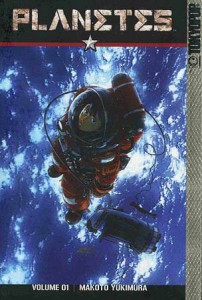 Hi. How are you? Welcome. Glad to see you. Welcome. Please, sit anywhere. Splendid. Splendid.
Hi. How are you? Welcome. Glad to see you. Welcome. Please, sit anywhere. Splendid. Splendid.
A bit ago one of our fearless leaders at WWEnd asked me if I’d like to do a blog concerning SF Manga. I guess he rather liked the short summaries I’d been doing over in the forum section, so why not expand things a bit for a blog? Sure, why not.
My hope is that as we all get more familiar with SF Manga that some of you will will soon have a copy of Nausicaa next to your copy of Dune. Or on your shelf will be The Demolished Man, next to Dying Inside, next to Akira. Or even, on the shelf next to that 1st Pantasia Press hardcover of Neuromancer (you lucky sod) will be a first run flipped and censored edition of Ghost in the Shell, followed by a second run unfliped uncensored edition of Ghost in the Shell. And hopefully each and every title I’ll be blogging about will gain a few more fans from my humble efforts.
But first I think we need an intro to help lay out the landscape we’re going to be traversing together. This is the common starting point, just in case someone is coming to all of this totally cold as I’m sure some of you are.
Manga is the Japanese word for comic book or comic strip. It’s used in America to denote comics specifically from Japan. It also denotes an artistic style. There is a very different visual style between Japanese and American comics.
Manhwa is basically the Korean word for comic book. It’s used in America to denote Korean comics. Manhua then is the Chinese/Taiwanese word for what they produce.
Anime, of course, is Japanese for animation. It’s used in the States for all animation from Japan. At one time, some chain stores and people used the made up word “Japanimation” to denote the same thing. And it’s now obvious, thank goodness, which word won that battle.
Otaku, is, well, an obsessed fan. Hi.
Stamp Otaku, Train Otaku, Star Wars or Star Trek Otaku, Toy Otaku, sub genre Transformer Otaku. If you’re obsessed, a fanatic, a fan boy, the Japanese would consider you to be Otaku. (I know I can beat this Manga addiction. I know I can. I just don’t want to! Sob. Sob.)
Cough cough, a-hem.
The kinds of Manga out there.
I’ll be concentrating on SF in the blog, but I think it’s safe to say if there is a niche out there, there’s a Manga to fill it. One Manga scanlation site lists out their represented genres/categories like this:
We have the familiar…
Action, Adult, Adventure, Comedy, Drama, Fantasy, Historical, Horror, Martial Arts, Mature, Mystery, Psychological, Romance, Sci-Fi, Smut, Sports, Supernatural, Suspense, Tragedy…
And then we get things which aren’t so familiar…
Ecchi – Has vague sexual content (skimpy clothing, partial/full nudity), but does not show sexual intercourse.
Gender Bender – Has character/s that become or act the opposite gender by cross-dressing, surgery, magical means, etc….
Harem – A series that involves one male character with several female characters that are usually attracted to said male character. And rarely, if ever, does this reach the point of hentai. (They used to say the male characters in these mangas had “The Tenchi Syndrome” which was named after Tenchi Masaki from Tenchi Muyo!)
Josei – Typically involves romance that is more realistic and less idealized. Primarily written for women (18-30).
Mecha – Involves large robotic machines.
Reverse Harem – A Reverse Harem is similar to Harem but it involves one female character with several male characters that are usually attracted to said female character. (You go, Girl!!!)
School Life – The majority of the story line takes place in a school.
Seinen – Typically deals with issues of adulthood. Primarily written for men (18-30).
Shoujo – Typically involves romance and character development. Primarily written for women (10-18).
Shoujo Ai – Romantic relationship between females not having “adult” themes.
Shounen – Typically involves fighting and/or violence. Primarily written for males (10-18).
Shounen Ai – Romantic relationship between males not having “adult” themes.
Slice of Life – Present day-to-day happenings that take place in a world that mirrors our own.
Yaoi – Intimate relationships between men.
Yuri – Intimate relationships between women.
And not included in their database but out there lurking…
Doujin or Doujinshi – The easiest way to explain this is to say fan art. Art, whole books of it, which are based on the characters and situations of anime and manga, in which the artist is not the owner/creator/publisher of those anime and manga works. I’m told it is also used to refer to original work created by amateur or professional artists. Most Doujinshi is hentai.
Hentai – The main focus is on graphic sexual acts. XXX. For adults only.
Kodomo – Children’s manga aimed at 6-11 year olds. They tend to be moral and teach certain traits and behaviors.
Lolicon – A character in the manga has a relationship with young or underage girls.
Shotacon – A character has a relationship with young or underage boys.
Have you got all that? Good.
I hope the point you’re getting here is the range in the Manga world. When this list gets compared to what one gets from the American publishing houses, Manga covers a much wider territory. And you can also see cultural differences at work.
When was the last time comics in the U.S. came out for the demographic of a female audience? The 50’s? The 60’s, maybe? Shoujo and Shoujo-ai have huge market share. It’s not a narrow little slice of the pie which is kept alive because of sentiment. It’s a viable marketplace.
There is also a close relationship between manga and anime. The usual order is a manga comes out, it’s a hit, and it gets an anime. Sometimes the order is light novel, then an anime with an accompanying manga. Or sometimes, game, light novel, manga, anime in sequence or all of them roughly at the same time. The Japanese love to do marketing across platforms. It’s an art form which they seem to be better at than we are.
Very rarely does it go the other way from anime to manga. And mostly, if this happens, the manga are side stories, supplemental material, or what we would call novelizations.
In Japan, most series are ongoing serials, one chapter at a time, in a big thick phonebook looking thing, with a bunch of other series, all doing the same thing. It’s most likely an artist, with two or three helpers, all working hard to meet the production schedule. Then come the Takubon, which we’d call a graphic novel. 150 to 200 pages of the series in one volume, like a compilation book. Bleach, which is being translated by Viz, is up to volume 57, chapter 513. Do the math. That’s a lot considering the series started in August of 2001. That’s weekly production. That’s insanely impressive.
The other thing which complicates this picture is the scanlations.
In the late 80’s to early 90’s, the number of translated manga could be counted on one hand, then two. Then slowly but surely the trickle led to a flood. By about 2005 we reached high water. I remember going into Borders (Ha! Borders.) and the manga section was about the same size as the SF & F section. We’ve now come down off that high water mark. The bankruptcy of the major translation house Tokyopop is a good indication of just how the market has shrunk. Except you can still get a huge flood of manga via the scanlation networks. People, just for the hell of it, and because they love it, get raw manga, scan it, translate it, photoshop in the English, and make it available to other otaku (mostly for free). So with the scanlation networks, one can know what’s going on in their favorite manga before the official release in the states, if there is an official release. Remember, only a fraction of things are officially released here by one of our publishing houses. It’s cool to know what happens as the Japanese know and not have to wait. And it’s really cool to burrow through the scanlation archives to find gems which will never have an official release in the states. In my upcoming blogs, I’ll definitely tell you where to find things because it’s not straight forward for all of them.
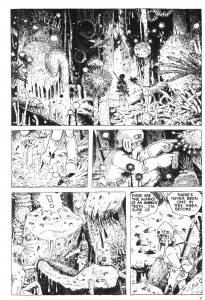 The same thing still goes on with anime since only a fraction of what’s available gets an official release here. Ever since VCRs first came on the market, I believe people have been fansubbing anime.
The same thing still goes on with anime since only a fraction of what’s available gets an official release here. Ever since VCRs first came on the market, I believe people have been fansubbing anime.
I was about done but I need to explain flipped and unfliped since I mentioned the two versions of Ghost in the Shell above. Back in the late 80’s when manga started to percolate over, the industry here flipped everything. Meaning the right to left flow of the Japanese original, had to be reversed to the English left to right standard. And those individual chapters from the monthly phonebook looking things were published as individual comic books here.
This went on for over a decade. The industry here experimented with unfliped comic book editions in the 2001/2002 timeframe as they produced flipped takubon style graphic novels. Then we had the big break. Since the industry here discovered that there was a market for the larger compilation Takubon, why not just translate the thing and be done with it? Comic book style manga went away. Flipped books went away, with only one notable exception. The standard now is just to translate the thing, produce the English edition takubon, and get the product out the door for the otaku to devour.
I know I’ve blathered on rather long but I think the territory in which I’ll be blogging about is now mapped. Next comes the top three SF mangas!



















 Full Details
Full Details
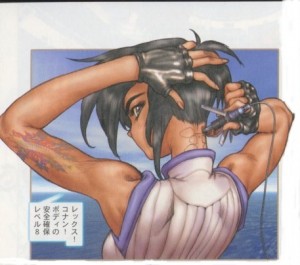
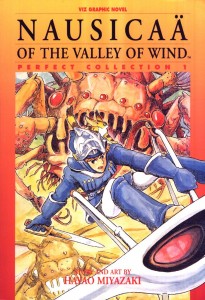
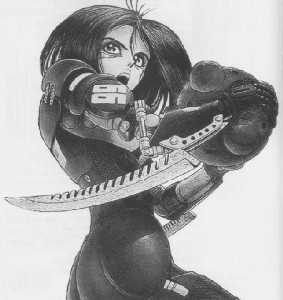


4 Comments
I am SOO looking forward to this! Great first post too. Ahhh!
Great first post, very informative :). I look forward to seeing more!
I’ll be following this as well. I’ve been reading comics since I came across Alan Moore and Frank Miller in the ’80s, but haven’t really taken the plunge into manga (Akira and Pluto are about it). Thanks for sharing your perspective…
What has always intimidated me about manga is the variety of material. I didn’t know where to start! This helps.
Sorry, the comment form is closed at this time.